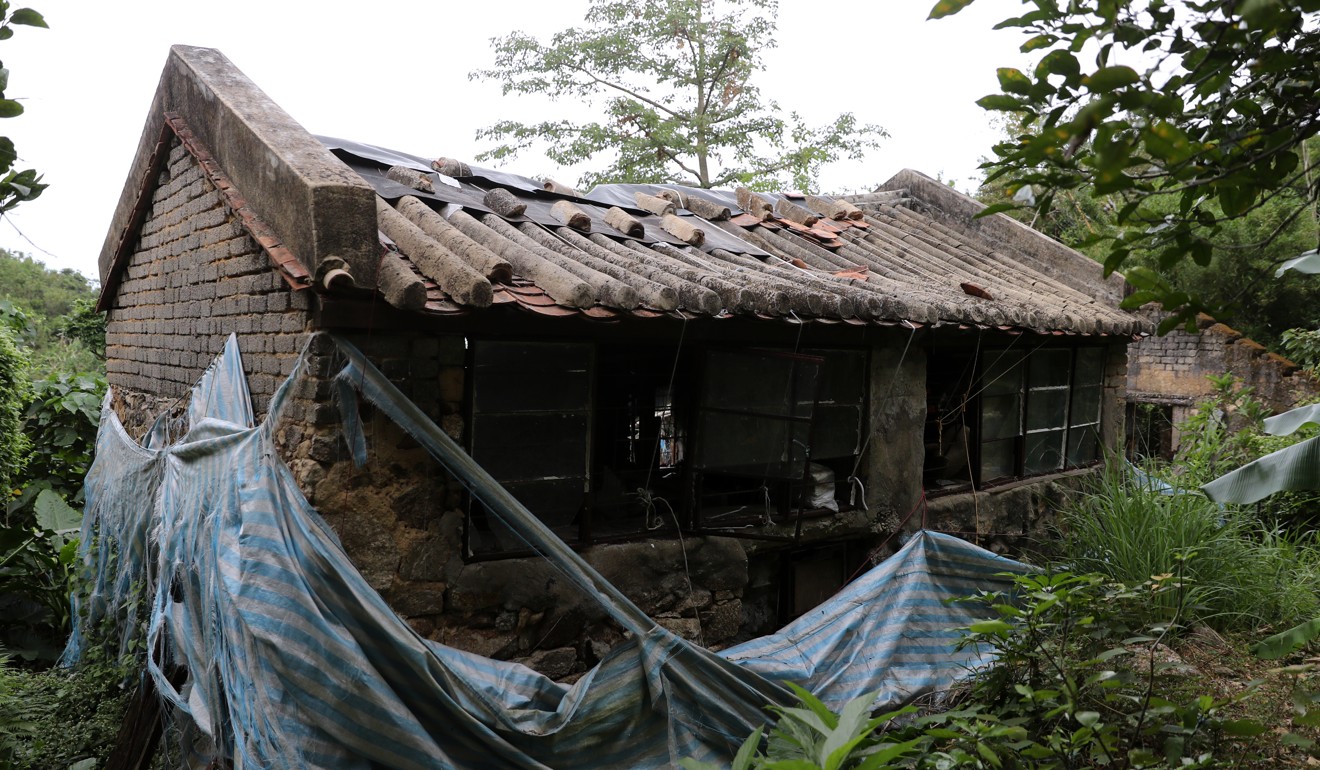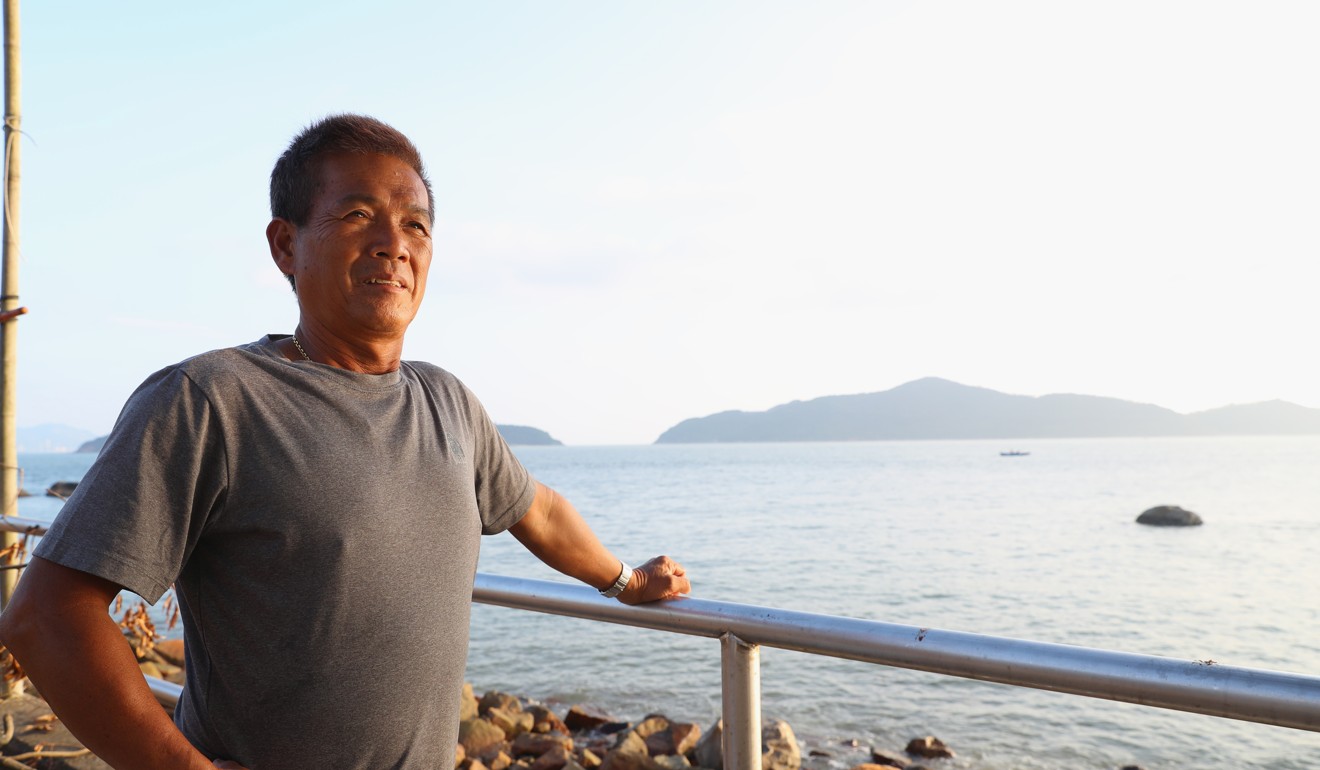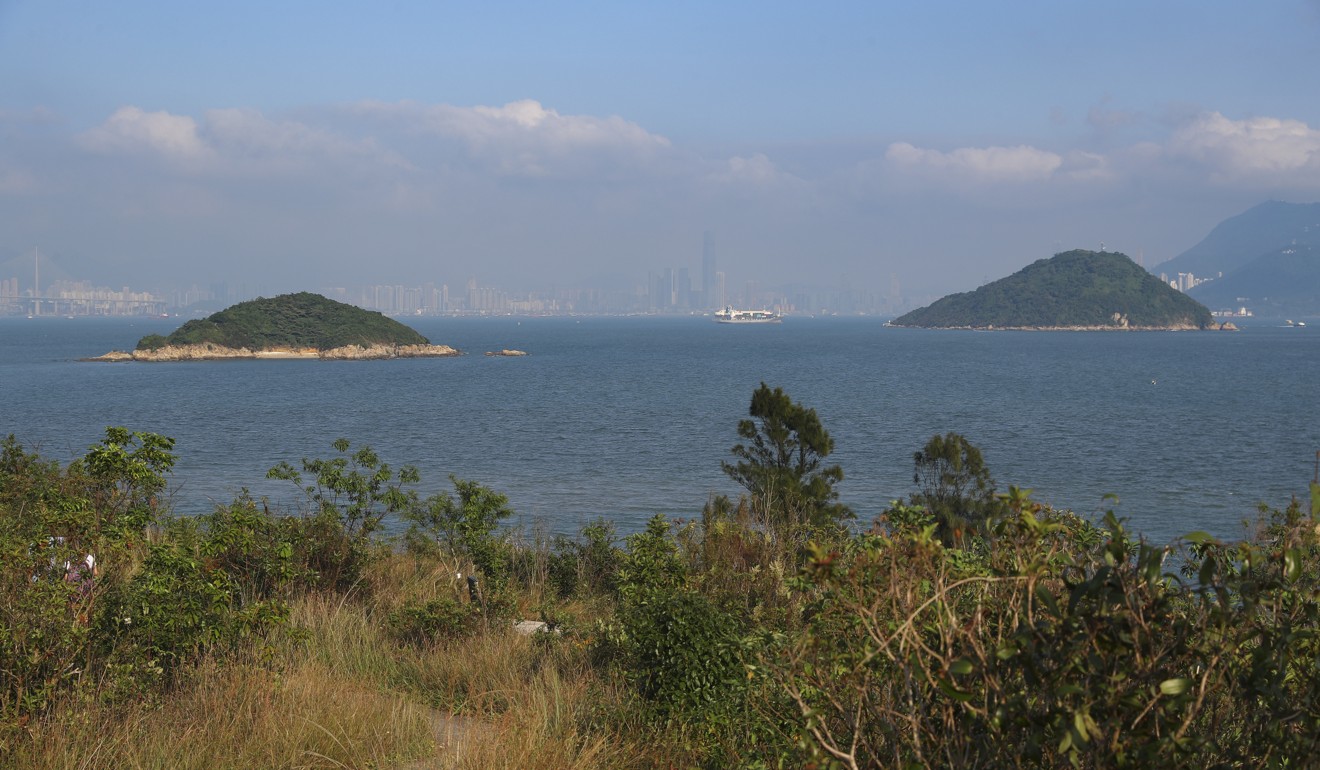Island residents warn against Lantau Tomorrow Vision reclamation, fearing pollution would be ‘sins for a thousand years’
- In second part of three-part series on Lantau reclamation, the Post talks to people who live on coasts nearby
- Concerns raised over climate change, altered sea currents and livelihood of fishermen

As Lam Chi-ngai, 76, sets foot on the remote Sunshine Island, mosquitoes swarm parts of his exposed skin, hungry for a rare taste of human blood.
But the ex-resident soldiers on, not bothering to swat at the pests. “I’ve been on this island for too long,” he said. “Its plants, its animals and I are one.”
Sunshine Island, a mostly unknown land mass in the waters east of Hong Kong’s Lantau Island, is Lam’s spiritual home, with its clean air and untouched environment having healed him in times of illness. He has lived on it for two years, and is the only former resident who returns to stay regularly in a tiny stone hut – the only one on the island which still retains a roof.
But the magical power the 54-hectare isle holds for Lam may soon be no more, as nearby, a site has been identified for four artificial islands proposed in an ambitious government plan for housing supply.
The project, dubbed Lantau Tomorrow Vision and announced by Chief Executive Carrie Lam Cheng Yuet-ngor as a cornerstone of her policy address last month, has put residents in the area on high alert. The reclaimed land is meant to be a housing and economic hub in the next 20 to 30 years.
Concerns have centred on pollution and environmental damage arising from the creation of 1,700 hectares of new land.
Residents fear that climate change bringing unpredictable weather and rising sea levels would not bode well for such a flood-prone investment. As marine channels are narrowed, the shrinking sea area would also mean fishermen have less space to ply their trade.
“[The reclamation] will damage the ecosystems of the sea and its surrounding areas greatly,” Lam said. “It’s too radical and too large in scale.”

Lam moved to Sunshine Island in 1978 after surgery on his small intestine. He wanted a reclusive, quiet place to nurse himself to recovery. By then, a once blossoming refugee camp – which at one point housed hundreds – founded by British Quaker Gus Borgeest in the 1950s, had shrunk over more than a decade.
Only five households remained on the island at that time, Lam said, including him, a former refugee camp staff, the ex-staff member’s adopted son and daughter-in-law, a pig farmer and a writer who suffered from psychological problems.
In two years Lam recovered and returned to live and work in the city, mainly writing for newspapers and magazines. But he would return to the island, and eventually, became the only one on it.
On a visit back to his refuge with the Post, Lam pointed to piles of rubbish on a pierless beach, the point of entry for the island, adding that the trash was brought over by currents.
He said he was worried the creation of the new islands would narrow sea channels, so currents would intensify and the waters would trap more rubbish.
“The damage will be historic,” Lam said. “We will really become sinners for a thousand years when future generations find the sea is all polluted.”

The damage will be historic ... We will really become sinners for a thousand years
On the nearby island of Peng Chau residents have similar concerns. Home to about 5,000 people, it is less than 3km away from the islands of Hei Ling Chau and Kau Yi Chau, around which the reclamation would take place.
Several residents the Post spoke to said they moved to Peng Chau in the 1990s for clean air, affordable housing and a tight-knit community. They all said they opposed the east Lantau reclamation for fear of pollution.
Writer Chan Wai-fong, 60, said monster typhoon Mangkhut wreaked havoc in Peng Chau, where floodwater was waist-deep. If the sea channels were further narrowed, she said, waves could become higher and more powerful when strong typhoons hit.

Lai Wah-sing, a 60-year-old fisherman, said the reclamation area was where he and some 20 local fishermen frequented for a living. He said some 100 fishing boats from elsewhere such as Cheung Chau and Aberdeen would also use the area.

He said if the plan proceeded, he would have to quit fishing and live on social security.
Gan Jianping, chair professor of the University of Science and Technology’s department of ocean science, said residents’ concerns were reasonable.
He said when ocean topography was changed by reclamation, the dynamics of currents could be altered, affecting the transport of rubbish and organic pollutants.

But Gan said the actual impact of the new islands remained unknown until the nearby currents were scientifically assessed through computer-based modelling.
“This is a very serious issue the Hong Kong government should investigate,” Gan said. “You need to do research. It can’t just be speculation.”